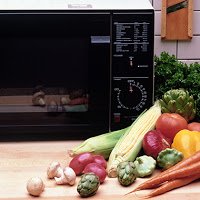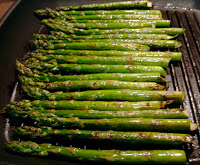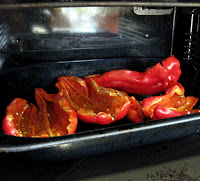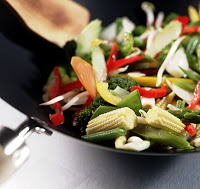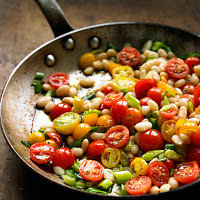The Best and Worst Ways to Cook Vegetables
Think a raw-veggie diet is the best way to go for optimal nutrition? Think again. Cooking vegetables helps to soften their tough fibrous exteriors and loosen up all the nutritional good stuff that lies inside. In fact, some vegetables, such as tomatoes, are actually more healthful if you eat them cooked, because the process of cooking them boosts their levels of the potent antioxidant lycopene. The only problem is, not all cooking methods are the same. Some boost nutrient content; some take it away. Some add unwanted fat, while others add the crucial amount for your body to absorb all the nutrients in vegetables.
Here’s what you need to know about cooking your veggies for optimum nutrition:
1. Microwaving
When in doubt, microwave your veggies for maximum antioxidant preservation. According to a Spanish study of how various cooking methods impact vegetable antioxidant capacity, microwaves reign supreme in prepping vegetables to retain their nutrients. Exception: Keep cauliflower out of the microwave; it loses more than 50 percent of its antioxidants if nuked.
2. Griddling
Beets, celery, onions, Swiss chard, and green beans cook particularly well on the griddle—yes, that pan you pull out only for Sunday-morning pancakes. Griddles allow vegetables to retain as many antioxidants as microwaving, according to the Spanish researchers. Word of caution: Griddles are often coated in nonstick chemicals that make cooking and cleaning convenient but may contain toxins linked to cancer. Shop for one without the coating, or use a thick frying pan with no oil.
4. Baking
Baking, or roasting, is hit-or-miss. Based on the study results, bake your artichokes, asparagus, broccoli, and peppers, all of which retained their antioxidant values, but not your carrots, Brussels sprouts, leeks, cauliflower, peas, zucchini, onions, beans, celery, beets, and garlic, which all saw decreases in nutrient levels. Where baking really shines is with green beans, eggplant, corn, Swiss chard, and spinach, all of which saw their antioxidant levels increase after baking. Toss a handful of those veggies into your next casserole.
4. Frying
It’s probably no surprise that this method fails the test when it comes to antioxidants and nutrition levels. In addition to adding way too much fat to your meal, it caused a loss of between 5 and 50 percent of each vegetable’s nutrients.
5. Pressure cooking and boiling
Generally speaking, don’t use these methods if you want to retain antioxidants in your vegetables. “In short, water is not the cook’s best friend when it comes to preparing vegetables,” says lead researcher A.M. Jimenez-Monreal. Peas, cauliflower, and zucchini are particularly susceptible to losing nutrients through boiling. If you do need to boil your vegetables, save the nutrient-rich boiling water and use it the next time you make a soup or sauce.
Of course there are always exceptions, and in this case, it’s carrots. A 2008 study from Italy found that boiling carrots boosted their carotenoid content more so than steaming or frying them.
6. Steaming
Those same Italian researchers found that steaming is the best method for preserving antioxidants found in broccoli and zucchini. But contrary to what you may think, this may not be the healthiest way to prep vegetables anyway. Many of the vitamins and nutrients in vegetables are fat soluble, meaning your body absorbs them better in the presence of fat. If you prefer steaming your vegetables, toss them with a small amount of olive oil before serving to boost nutrient absorption.
7. Sautéing
None of the studies on nutrient levels and cooking techniques have included sautéing vegetables over high heat in a little bit of oil. However, the process of sautéing is similar to that of microwaving: cooking your vegetables over high heat in a short amount of time. That minimizes nutrient loss, and the oil in which you’re sautéing them helps your body absorb more of the nutrients.
